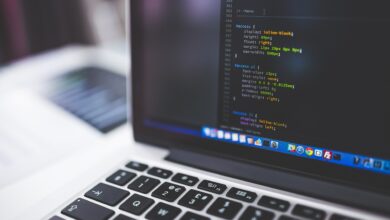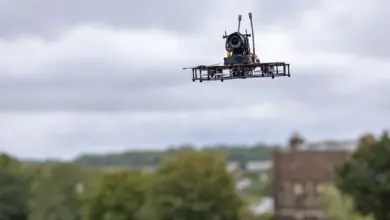
Introduction
In the rapidly evolving landscape of modern technology, one concept that has captured the attention of scientists, engineers, and tech enthusiasts alike is quantum computing. Unlike classical computers, which operate on binary bits of 0s and 1s, quantum computers use quantum bits or qubits, which can exist in multiple states at once. This seemingly small difference opens up vast possibilities for computation, offering the potential to solve problems that are currently impossible for even the most advanced classical supercomputers.
Quantum computing, once considered a distant dream, has now become a tangible reality. Its rise is not just a leap forward in processing power but a complete shift in how we approach problem-solving across multiple industries, from cryptography to medicine, climate modeling, and beyond. In this article, we will explore the rise of quantum computing, how it works, its potential applications, and the challenges that lie ahead.
What is Quantum Computing?
To understand quantum computing, we first need to delve into the basics of quantum mechanics, the branch of physics that deals with phenomena at the atomic and subatomic levels. Traditional computers process information in a binary format, using bits that can either be in a state of 0 or 1. However, quantum computers use qubits, which, thanks to a property called superposition, can exist as both 0 and 1 simultaneously.
In addition to superposition, qubits can also be entangled with one another through a phenomenon known as quantum entanglement. This means that the state of one qubit is dependent on the state of another, regardless of the distance between them. Entanglement allows for an incredible increase in processing power, as the number of possible states increases exponentially with each additional qubit.
Interference is another critical principle in quantum computing. It allows quantum computers to combine probabilities in such a way that the “wrong” answers cancel out and the “right” answers are amplified. These principles—superposition, entanglement, and interference—form the foundation of quantum computing, enabling it to perform certain calculations at speeds far beyond what classical computers can achieve.
A Brief History of Quantum Computing
Quantum computing is not a new concept. It was first theorized by physicist Richard Feynman in the 1980s. He recognized that classical computers struggle to simulate quantum systems efficiently due to the sheer complexity of quantum mechanics. He proposed that a computer built on the principles of quantum mechanics could simulate these systems far more effectively.
In 1985, David Deutsch expanded on this idea by introducing the concept of a universal quantum computer, capable of performing any computation that a classical computer could, but much faster. This theoretical groundwork laid the foundation for the quantum revolution.
Fast forward to the 21st century, and significant progress has been made. In 2019, Google announced that its quantum computer, Sycamore, had achieved quantum supremacy—the point where a quantum computer can solve a problem faster than a classical supercomputer. Although this achievement was met with some skepticism and debate within the scientific community, it marked a pivotal moment in the development of quantum computing.
How Does Quantum Computing Work?
To understand how quantum computing works, let’s break down the basic building blocks and processes:
- Qubits: Unlike classical bits, qubits can exist in a state of 0, 1, or any quantum superposition of these states. This ability allows quantum computers to handle a vast number of calculations simultaneously. However, qubits are extremely delicate and can lose their quantum state due to environmental interference, a problem known as quantum decoherence.
- Quantum Gates: In classical computing, logic gates perform operations on bits. Similarly, quantum gates perform operations on qubits. These gates manipulate qubits’ superposition and entanglement, allowing quantum computers to execute complex algorithms.
- Quantum Circuits: Quantum gates are combined to form quantum circuits, which process the information contained in qubits. These circuits are the equivalent of algorithms in classical computers and are designed to solve specific problems.
- Measurement: Once a quantum computer has completed its calculations, the qubits must be measured. During measurement, the qubits collapse from their superposition into a definite state of either 0 or 1. This process is probabilistic, meaning that repeated measurements may yield different results. Therefore, quantum algorithms often rely on statistical methods to determine the correct answer.
Applications of Quantum Computing
Quantum computing holds the potential to revolutionize many industries, offering solutions to problems that are currently unsolvable due to the limitations of classical computing. Here are some of the most promising applications:
- Cryptography: One of the most well-known applications of quantum computing is in cryptography. Modern encryption methods rely on the difficulty of factoring large numbers—a task that is computationally expensive for classical computers. Quantum computers, however, can use Shor’s algorithm to factor large numbers exponentially faster, potentially breaking current encryption standards. This has significant implications for data security and privacy, prompting the development of quantum-safe cryptography.
- Drug Discovery and Materials Science: Quantum computing could dramatically accelerate the discovery of new drugs and materials by simulating molecular interactions at a quantum level. Classical computers struggle to model these interactions accurately due to the complexity of quantum mechanics. With quantum computers, researchers could explore new compounds, optimize chemical reactions, and discover new materials for use in industries such as energy, electronics, and medicine.
- Optimization Problems: Many industries rely on solving optimization problems, from logistics and supply chain management to financial modeling. Quantum computers can process vast amounts of data and find optimal solutions much faster than classical computers. For example, quantum algorithms could optimize airline routes, reducing fuel consumption and costs, or optimize stock portfolios for maximum returns with minimal risk.
- Artificial Intelligence (AI) and Machine Learning (ML): Quantum computing could significantly enhance AI and ML by speeding up the processing of large datasets and improving the accuracy of predictions. Quantum algorithms could be used to optimize training models and reduce the time needed to solve complex problems in AI, such as natural language processing and image recognition.
- Climate Modeling: Climate models are notoriously complex, involving the simulation of numerous variables and interactions. Quantum computing could revolutionize climate science by providing more accurate models and predictions, helping scientists understand the effects of climate change and devise strategies for mitigation.
Challenges and the Road Ahead
Despite the incredible potential of quantum computing, there are several challenges that must be overcome before it can become mainstream. Some of these challenges include:
- Error Rates: Qubits are highly sensitive to external disturbances, and even the slightest interference can cause errors in calculations. To make quantum computers practical, researchers need to develop more stable qubits and error-correction methods to reduce the impact of quantum decoherence.
- Scalability: Currently, quantum computers are limited in the number of qubits they can use. While prototypes have been built with dozens or even hundreds of qubits, scaling up to the millions of qubits needed for practical applications is a significant technical challenge.
- Quantum Software: Developing quantum algorithms and software is still in its infancy. While some quantum algorithms, such as Shor’s and Grover’s algorithms, have been developed, much work remains to be done in creating quantum software that can tackle real-world problems.
- Cost and Infrastructure: Quantum computers require highly specialized environments to operate, including near-absolute zero temperatures and vacuum-sealed chambers to protect qubits from interference. This makes building and maintaining quantum computers extremely expensive, and it may take years or even decades before they become accessible to businesses and individuals.




